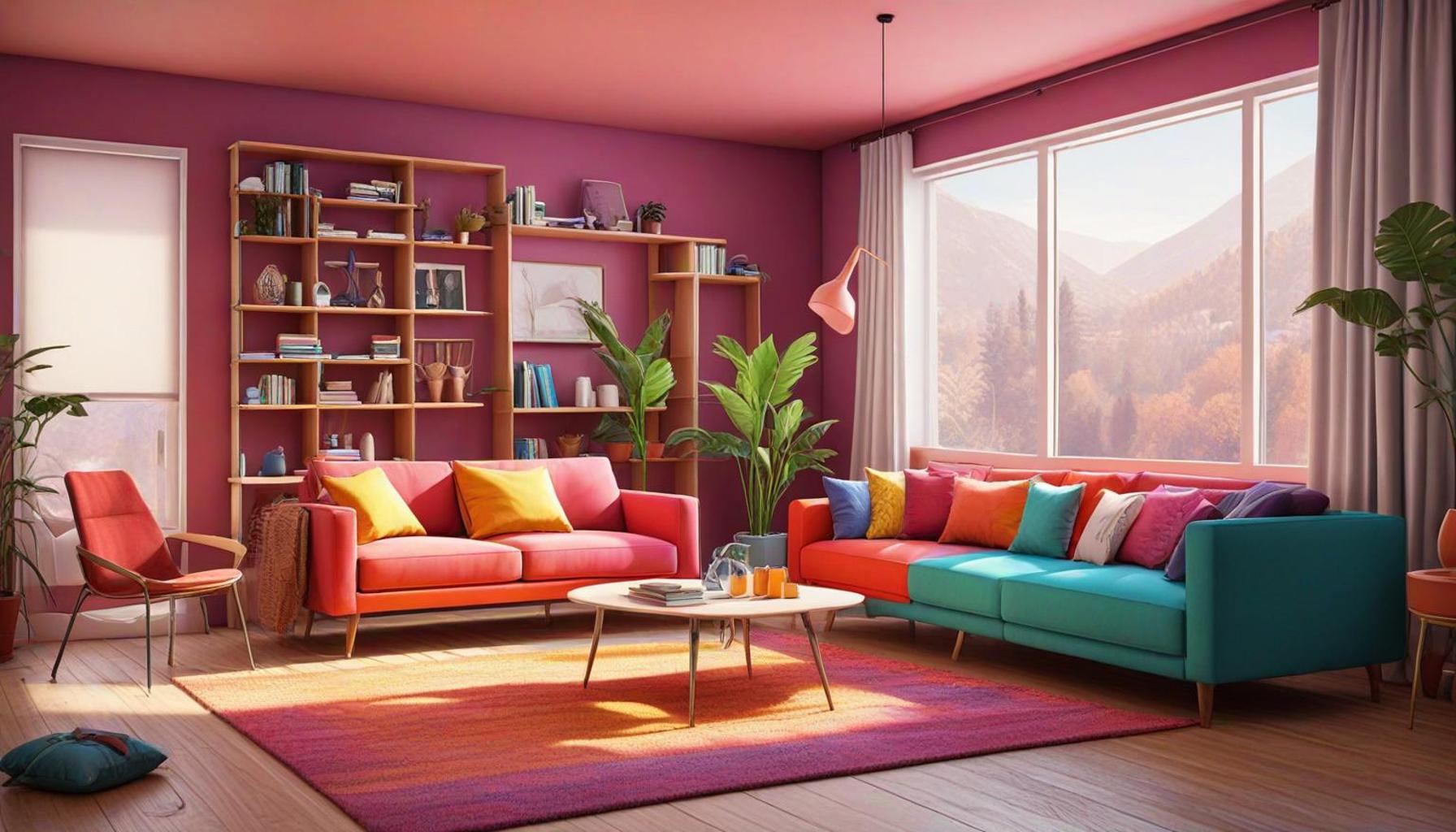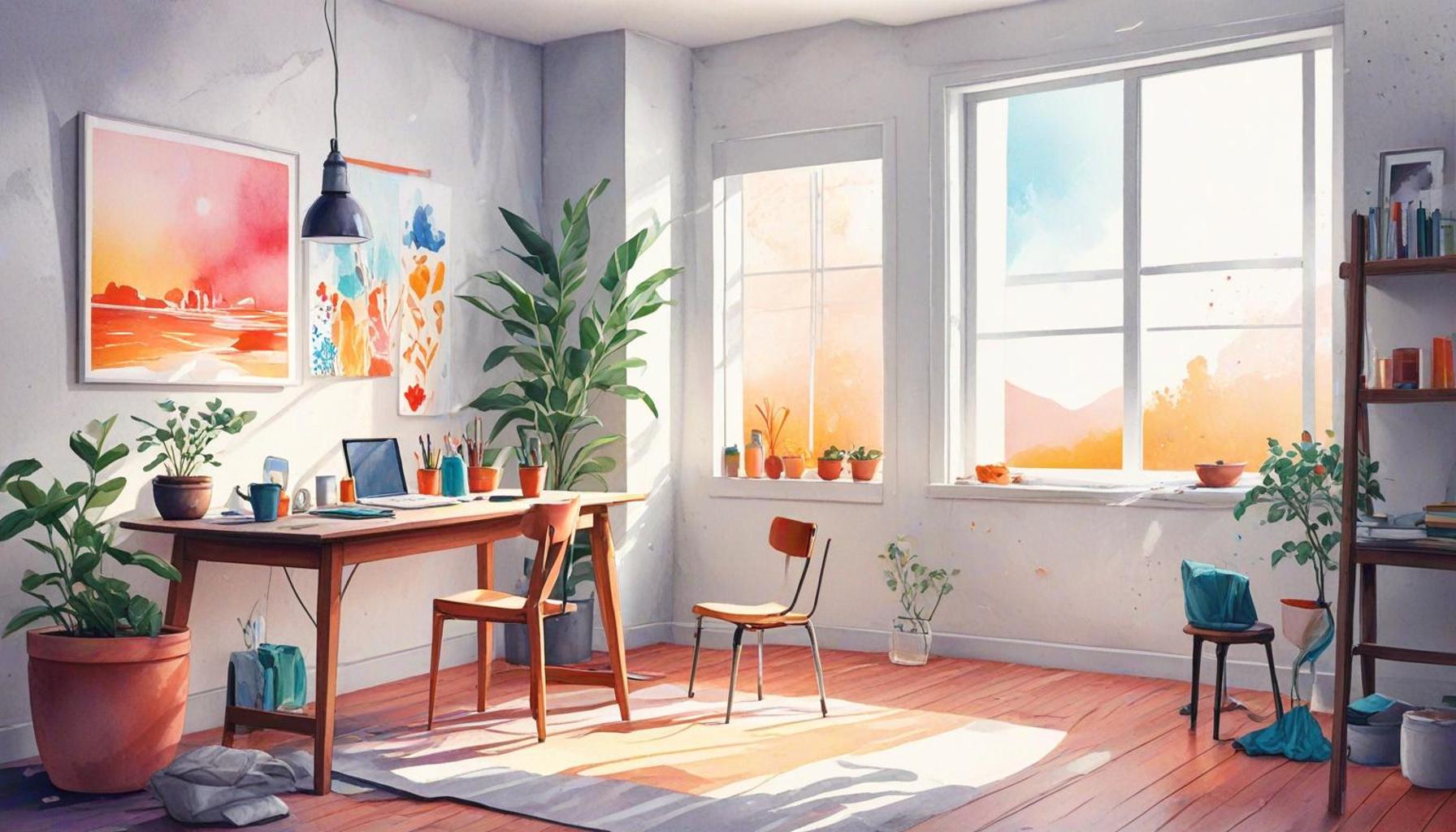Intentional Design in Furniture Selection: Creating Functional and Cozy Spaces

The Importance of Intentional Design in Furniture Selection
In today’s fast-paced world, our living spaces play a crucial role in defining our well-being. Intentional design prioritizes the creation of environments that not only appeal visually but also enhance both functionality and comfort. Furniture is more than just a collection of items; it is a fundamental component that shapes our lifestyle and daily experiences. By thoughtfully selecting the right pieces, you can establish areas that invite relaxation, encourage productivity, and promote overall harmony in your home.
When it comes to furniture selection, several key elements are essential to consider:
- Functionality: This is paramount; the furniture you choose should serve a clear purpose and align with your lifestyle. For instance, if you work from home, investing in an ergonomic office chair and a spacious desk can significantly enhance productivity. In contrast, if you often host gatherings, a modular sectional sofa might be your best bet, allowing for easy rearrangement to suit your needs.
- Comfort: Comfort is vital in creating a cozy atmosphere. A plush sofa can invite you to unwind, while an inviting armchair can become your go-to spot for reading or relaxation. Materials and textures also play a role—soft fabrics can enhance comfort, while the right cushion support can turn a simple chair into a dreamy retreat.
- Style: Your furniture should reflect your personality and taste. The design of your living space should be an extension of who you are. For example, if you lean towards a mid-century modern aesthetic, incorporating pieces with clean lines, natural woods, and retro finishes will help to reinforce that style, creating an inviting and harmonious environment.
- Space Utilization: Efficiently utilizing your space can transform even the smallest rooms. Furniture with built-in storage can help declutter while providing an organized environment. In a compact apartment, for example, a coffee table that doubles as a storage unit can be both practical and stylish, allowing you to maximize every square foot.
By emphasizing these elements, you can cultivate a space that is both functional and cozy, making it your personal sanctuary. The United States, with its rich tapestry of cultures and design preferences, offers countless options to cater to diverse tastes and requirements. From contemporary minimalist styles prominent in urban settings like New York City to the rustic charm found in many homes across the Midwest, the choices are abundant and varied.
As you venture into the world of furniture selection, it is crucial to think critically about how each piece contributes to your overarching design intent. Emphasizing intentionality allows you to craft spaces that resonate with comfort and productivity instead of merely being filled with assorted items.
In the following sections of this article, we will delve deeper into the principles of intentional design and explore practical strategies for making informed choices that will significantly elevate your living spaces. From understanding the nuanced interplay between light, color, and texture to assessing the longevity of materials, you will find invaluable insights that encourage you to curate a home that truly reflects your lifestyle.
DISCOVER MORE: Click here to learn about creating efficient spaces with minimalism
Key Principles of Intentional Design in Furniture Selection
To create spaces that resonate with both functionality and comfort, understanding the principles of intentional design is essential. It’s not simply about filling a room with furniture; it’s about making deliberate choices that influence how you live, work, and relax within your environment. Here are some pivotal principles to consider when selecting furniture for your home:
- Adaptability: Flexibility in furniture design allows you to cater to varying needs over time. Look for items that can serve multiple purposes—an extendable dining table can accommodate both intimate dinners and larger gatherings, while a sofa bed provides a comfortable place for guests to stay without the need for a dedicated guest room. The ability to transform spaces easily can make the difference between a cluttered and a well-functioning home.
- Scale and Proportion: Choosing the right size furniture is critical, particularly in relation to the dimensions of your rooms. Oversized pieces can overwhelm a small space, while too-small items may fail to create a cozy atmosphere. Take measurements and visualize the arrangement before making a purchase; this practice ensures that each element fits not just physically but also proportionately within your design.
- Color Harmony: The colors of your furniture can significantly impact the mood of your space. Lighter tones can make small rooms feel open and airy, while deeper hues can add depth and warmth. Utilizing a cohesive color palette creates a seamless flow throughout your home. By selecting complementary shades, you can forge a sense of unity and purpose in your design scheme.
- Quality and Longevity: Investing in well-crafted furniture can save you money in the long run. Prioritize materials that are durable and sustainable, such as hardwoods or performance fabrics that withstand wear and tear. Craftsmanship matters; a solidly built chair or table not only enhances aesthetic appeal but also promises longevity, reducing the need for frequent replacements.
Understanding these principles helps to foster a sense of balance and intention in your living spaces, ultimately contributing to a more functional and cozy environment. By reflecting on how furniture choices affect everyday life, we can begin to view our selections through the lens of intentionality, crafting areas that support every aspect of our lifestyle.
Moreover, specific trends in furniture design reveal a growing appreciation for intentionality in modern spaces. For example, the rise of minimalism has pushed consumers to simplify their interiors by investing in fewer yet highly functional pieces that promote an uncluttered living environment. Similarly, biophilic design—integrating natural elements into the home—has gained popularity, encouraging the use of furniture that connects occupants with nature. In both cases, the focus remains on creating a harmonious setting that nurtures well-being.
As we explore the nuances of intentional design in the upcoming sections, you will learn how to apply these principles at home. From the finest techniques for layering textures to selecting items that enhance your lifestyle, you will be empowered to create spaces that are not just visually appealing but also truly reflective of who you are. Through this exploration, we challenge you to reconsider your furniture choices and embrace the journey towards crafting a space that is uniquely yours.
Understanding Intentional Design
Intentional design in furniture selection goes beyond aesthetics; it encapsulates a practical approach to enhancing everyday living. With an emphasis on functionality, cozy aesthetics, and comfort, intentional design ensures that each piece of furniture serves a purpose while also contributing to the overall ambiance of a space. It’s about selecting items that not only fit the visual style of a home but also fulfill the needs of its inhabitants.
Key Principles of Intentional Design
When engaging in intentional design, several fundamental principles come into play:
- Functionality: Choose furniture that meets specific needs, whether for storage, seating, or work. Multi-functional pieces can save space and enhance usability.
- Comfort: Prioritize comfort to create inviting environments. Selecting plush seating or temperature-regulating materials can greatly enhance the coziness of a space.
- Scale and Proportion: Make sure that furniture pieces are proportionate to the space. Oversized furniture in small rooms can create a cramped feel, while small pieces can feel lost in larger areas.
- Harmony: Aim for a consistent style that reflects personal taste. This can be achieved through color palettes, material choices, and design themes that create visual harmony throughout the space.
Creating Usable Spaces with Intentionality
Intentional design fosters spaces that are not only beautiful but also usable. Consider the daily routines within a home when selecting furniture. For example, if entertaining guests is common, integrating cozy sectional sofas can enhance social interaction. By understanding how a space is utilized, individuals can select pieces that complement those activities.
| Category 1 | Category 2 |
|---|---|
| Comfortable Seating | Enhances relaxation and invites social interaction. |
| Functional Storage | Keeps spaces organized and clutter-free while maintaining style. |
Choosing the right furniture through intentional design principles ensures that living spaces are both visually appealing and practical. Each decision made in the selection process enhances the everyday experiences of those who inhabit the space, making it a vital consideration for any interior designer or homeowner. Understanding the extensive benefits of integrating functionality and coziness into furniture selection enriches our approach to creating inviting homes.
DISCOVER MORE: Click here to uncover essential habits for a simpler life
Strategies for Implementing Intentional Design in Your Home
With key principles of intentional design established, the next step is to explore savvy strategies that can help you implement these concepts effectively within your home. Creating functional and cozy spaces requires thoughtful consideration and a willingness to experiment with your furniture choices. Here are several approaches to incorporate into your design journey:
- Layering Textures: One effective way to enhance the coziness of your space is through the strategic layering of textures. Combine various materials—soft throws, plush cushions, and woven rugs—to create a welcoming atmosphere. For instance, a sleek leather sofa can be softened with fabric throws, while a rough-hewn wood coffee table provides a grounding element that juxtaposes with smoother finishes. This layering not only adds visual interest but also invites interaction and comfort, making your environment feel lived-in and inviting.
- Creating Zones: Especially in open floor plans, defining distinct areas within a space can enhance functionality. Use area rugs to demarcate different zones, such as a reading nook or an entertainment area. This approach helps those who inhabit the space to intuitively understand its purpose, allowing for a seamless flow throughout the home. Furthermore, using furniture like bookcases or sofas to anchor these zones can facilitate conversations and enable more focused activities, enhancing your living experience.
- Incorporating Personal Touches: Intentional design thrives on authenticity. Curate your furniture selections to include pieces that resonate with your identity and tell your story. This might involve mixing heirloom items with contemporary finds or sourcing furniture from local artisans who reflect your style. Not only does this personalize your living space, but it also contributes to a sense of belonging and comfort, ensuring that your home feels like an extension of yourself.
- Balancing Function with Aesthetics: While it is tempting to prioritize looks, functional design must take precedence. When selecting furniture, assess how each piece will serve your daily life. For example, a beautifully designed coffee table may be visually appealing, but if it lacks storage, it may lead to clutter. Seek out designs that balance aesthetics with practicality—such as side tables with built-in shelves or ottomans that double as storage. This ensures that your home maintains its beauty while serving the demands of your lifestyle.
Furthermore, considering the principles of sustainable design can also play a vital role in enhancing the intentionality of your furniture selection. As consumers become more aware of their environmental impact, there is a delightful shift towards sourcing eco-friendly products. Reclaimed wood furniture or pieces crafted from sustainable materials not only reduce waste but also contribute to a unique narrative within your space. By prioritizing sustainability, you create a home that reflects your values—enhancing both its comfort and your peace of mind.
In tandem with these strategies, it may be beneficial to draw inspiration from various design styles that emphasize intentionality. Think about trends like Scandinavian design, which champions simplicity and functionality, or the warm aesthetics of mid-century modern, known for its clean lines and organic forms. By exploring these styles and incorporating elements that resonate with you, you can inform your furniture choices while ensuring your space embodies a harmonious intentional design.
As you delve deeper into the world of intentional design in furniture selection, let these strategies guide you. Embrace the process of crafting spaces that not only meet your functional needs but also envelop you in a cozy, welcoming atmosphere, ultimately creating a home that is both practical and a true reflection of who you are.
DISCOVER MORE: Click here for insights on simple living
Conclusion
In summary, intentional design in furniture selection is a powerful approach to crafting spaces that are not only aesthetically pleasing but also functional and inviting. By embracing strategies such as layering textures, creating defined zones, and incorporating personal touches, individuals can transform their homes into cozy sanctuaries that reflect their lifestyle and personality. The key lies in balancing form with function, ensuring that each piece serves a purpose while contributing to the overall atmosphere.
Moreover, the concept of sustainability plays an increasingly important role in today’s design choices. By opting for eco-friendly materials and thoughtfully sourced furniture, homeowners can reduce their environmental footprint while enriching their living spaces with unique narratives. This thoughtful selection process not only enhances comfort and serenity but also aligns with a deeper sense of identity and values.
As you embark on your journey towards creating functional and cozy spaces, remain open to exploring various design styles and innovations that resonate with you. The culmination of these efforts leads to a home that encapsulates both practicality and a warm, welcoming ambiance. Embrace the art of intentional design, and allow your furniture choices to not only meet your everyday needs but to narrate the story of who you are. This quest for a thoughtfully curated environment will ultimately enrich your life and create spaces where cherished memories can flourish.


